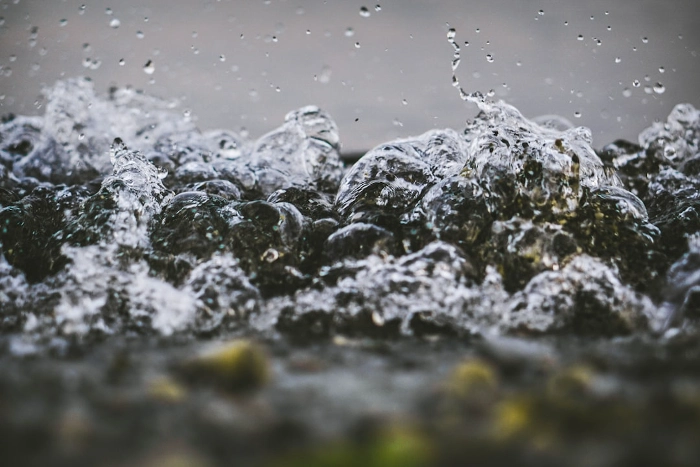The Ultimate Guide to Boiling Water: Tips, Techniques, and Common Mistakes to Avoid

The Ultimate Guide to Boiling Water: Tips, Techniques, and Common Mistakes to Avoid
Boiling water is a basic kitchen skill that everyone should master. Whether making a cup of tea, cooking pasta, or preparing a delicious soup, knowing how to boil water correctly can make a big difference in the outcome. In this ultimate guide, we’ll cover essential tips, boiling techniques, and common mistakes to avoid. Plus, we’ll dive into some frequently asked questions about boiling water to help you improve your kitchen skills.
Why Is Boiling Water Important?
Boiling water is the process of heating water to its boiling point, which is 212°F (100°C) at sea level. This simple but important cooking technique is used in many recipes, such as boiling eggs, pasta, and vegetables, or preparing beverages like tea and coffee. Understanding the nuances of boiling water can ensure your food and drinks turn out perfectly every time.
Essential Tips for Boiling Water
1. Use the Right Pot: The type of pot you use for boiling water can make a significant difference. For small quantities, a saucepan works well. For larger batches, opt for a larger stockpot. Ensure the pot is clean and free of any leftover residue that could affect the taste or quality of your food.
2. Use a Lid to Speed Up the Process: Placing a lid on your pot while boiling water can help retain heat, speeding up the process. This is especially helpful when you’re boiling larger quantities of water or need to get the water to a boil quickly.
3. Start with Cold Water: Always start with cold water for boiling, especially if you want the most consistent temperature. If you use hot water, it may contain minerals from your water heater, which could affect the taste of your food.
4. Increase Heat Gradually: Turn your stove to high heat to bring the water to a boil quickly. However, if you're in no rush, gradually increasing the heat may prevent splattering, especially if you're boiling a large pot of water.
5. Add Salt When Boiling Pasta: If you're boiling water to cook pasta, adding salt not only enhances the flavor but also slightly raises the boiling point of water, making it cook the pasta faster. A good rule of thumb is 1 tablespoon of salt per 4 liters of water or make the water as salty as the sea.
Techniques for Boiling Water Perfectly
1. Boiling Water for Tea or Coffee: The temperature of boiling water is critical for making tea or coffee. For black tea, bring the water to a full rolling boil, but for green tea, stop just before the water boils, at around 175°F (80°C) to 185°F (85°C). This ensures the perfect brew without bitterness.
2. Boiling Eggs: When boiling eggs, place them in a pot of cold water, then heat it up on medium-high. Once the water reaches a rolling boil, turn off the heat and cover the pot, letting the eggs sit for about 9-10 minutes for hard-boiled eggs. For soft-boiled eggs, aim for 6 minutes of sitting in the hot water after boiling. After boiling put them in ice-cold water for easier shell removal.
3. Boiling Vegetables: To retain the nutrients in vegetables, it’s important not to overboil them. For most vegetables, a 5-10 minute boil is sufficient. You can also blanch vegetables (briefly boiling them and then plunging them into ice water) to preserve their color and nutrients.
Common Boiling Mistakes to Avoid
1. Overfilling the Pot: When boiling water, avoid overfilling the pot. Water can bubble over, creating a mess on your stovetop. To avoid this, leave at least 1-2 inches (3-5 cm) of space between the water level and the rim of the pot.
2. Boiling Too Long: While it may seem tempting to leave the water boiling longer for some recipes, this can lead to overcooking your food. For example, overboiling vegetables can make them mushy, and overboiling eggs can lead to a greenish yolk.
3. Boiling with a Lid Off: While you might think boiling water with the lid off is okay, it actually wastes energy and time. The lid helps to trap the heat, which will bring the water to a boil faster and keep the temperature consistent.
4. Ignoring Boiling Time: Whether you're boiling eggs, pasta, or vegetables, always be mindful of the boiling time. Use a timer to avoid overcooking your ingredients, which can lead to unpleasant textures and flavors.
Frequently Asked Questions About Boiling Water
1. Can I boil water in the microwave?
Yes, you can boil water in the microwave. However, be cautious when removing the container, as water can "superheat" in the microwave, causing it to erupt suddenly when disturbed.
2. Why does my water take so long to boil?
If your water takes too long to boil, it could be due to your pot’s material (some materials are better at retaining heat than others) or the amount of water. Using a lid and turning the heat up can help speed up the process.
3. How do I know if my water is boiling?
Water is considered to be boiling when large bubbles rapidly rise to the surface. You’ll also hear a gurgling sound. The water should be at a consistent rolling boil, which indicates that it's at or near 212°F (100°C).
Conclusion
Boiling water might seem simple, but mastering the technique can elevate your cooking and beverage preparation. By following these tips and avoiding common mistakes, you'll be able to boil water efficiently and use it to create a wide variety of delicious dishes. Whether you’re boiling eggs, pasta, or making the perfect cup of tea, understanding the science behind boiling water ensures your food always turns out just right.
